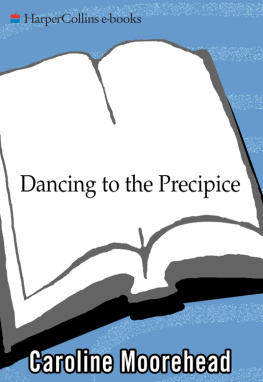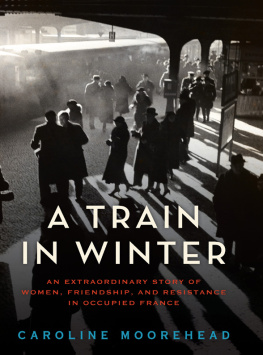Moorehead - Dancing to the Precipice: Lucie Dillon, Marquise de la Tour du Pin and the French Revolution
Here you can read online Moorehead - Dancing to the Precipice: Lucie Dillon, Marquise de la Tour du Pin and the French Revolution full text of the book (entire story) in english for free. Download pdf and epub, get meaning, cover and reviews about this ebook. publisher: HarperCollins, genre: Politics. Description of the work, (preface) as well as reviews are available. Best literature library LitArk.com created for fans of good reading and offers a wide selection of genres:
Romance novel
Science fiction
Adventure
Detective
Science
History
Home and family
Prose
Art
Politics
Computer
Non-fiction
Religion
Business
Children
Humor
Choose a favorite category and find really read worthwhile books. Enjoy immersion in the world of imagination, feel the emotions of the characters or learn something new for yourself, make an fascinating discovery.
Dancing to the Precipice: Lucie Dillon, Marquise de la Tour du Pin and the French Revolution: summary, description and annotation
We offer to read an annotation, description, summary or preface (depends on what the author of the book "Dancing to the Precipice: Lucie Dillon, Marquise de la Tour du Pin and the French Revolution" wrote himself). If you haven't found the necessary information about the book — write in the comments, we will try to find it.
Her canvases were the court of Louis XVI and Marie Antoinette; the Great Terror; America at the time of Washington and Jefferson; Paris under the Directoire and then under Napoleon; Regency London; the battle of Waterloo; and, for the last years of her life, the Italian ducal courts. Like Saint-Simon at Versailles, Samuel Pepys during the Great Fire of London, or the Goncourt brothers in nineteenth-century France, Lucie Dillona daughter of French and British nobility known in France by her married name, Lucie de la Tour du Pinwas the chronicler of her age.
La Rochefoucauld called her a cultural jewel. The Sultan of the Ottoman Empire favored her for his dinner companion in Paris. Napoleon requested she attend Josephine. Her friends included Talleyrand, Madame de Stal, Chateaubriand, Lafayette, and the Duke of Wellington, with whom she played as a child. She witnessed firsthand the demise of the French monarchy, the wave of Revolution and the Reign of Terror, and the...
Moorehead: author's other books
Who wrote Dancing to the Precipice: Lucie Dillon, Marquise de la Tour du Pin and the French Revolution? Find out the surname, the name of the author of the book and a list of all author's works by series.


![Moorehead - Coopers Creek to LangTang II. [With plates, including portraits.]](/uploads/posts/book/221288/thumbs/moorehead-coopers-creek-to-langtang-ii-with.jpg)












